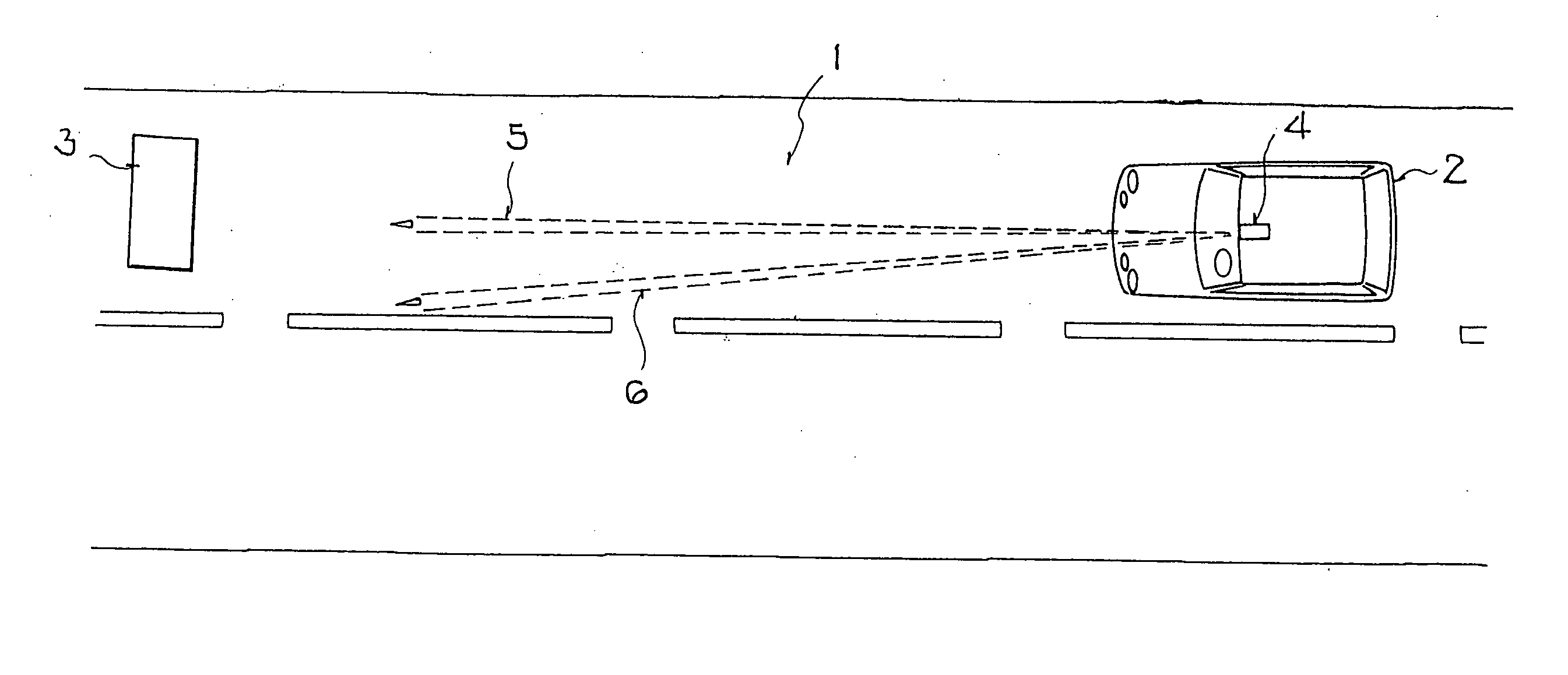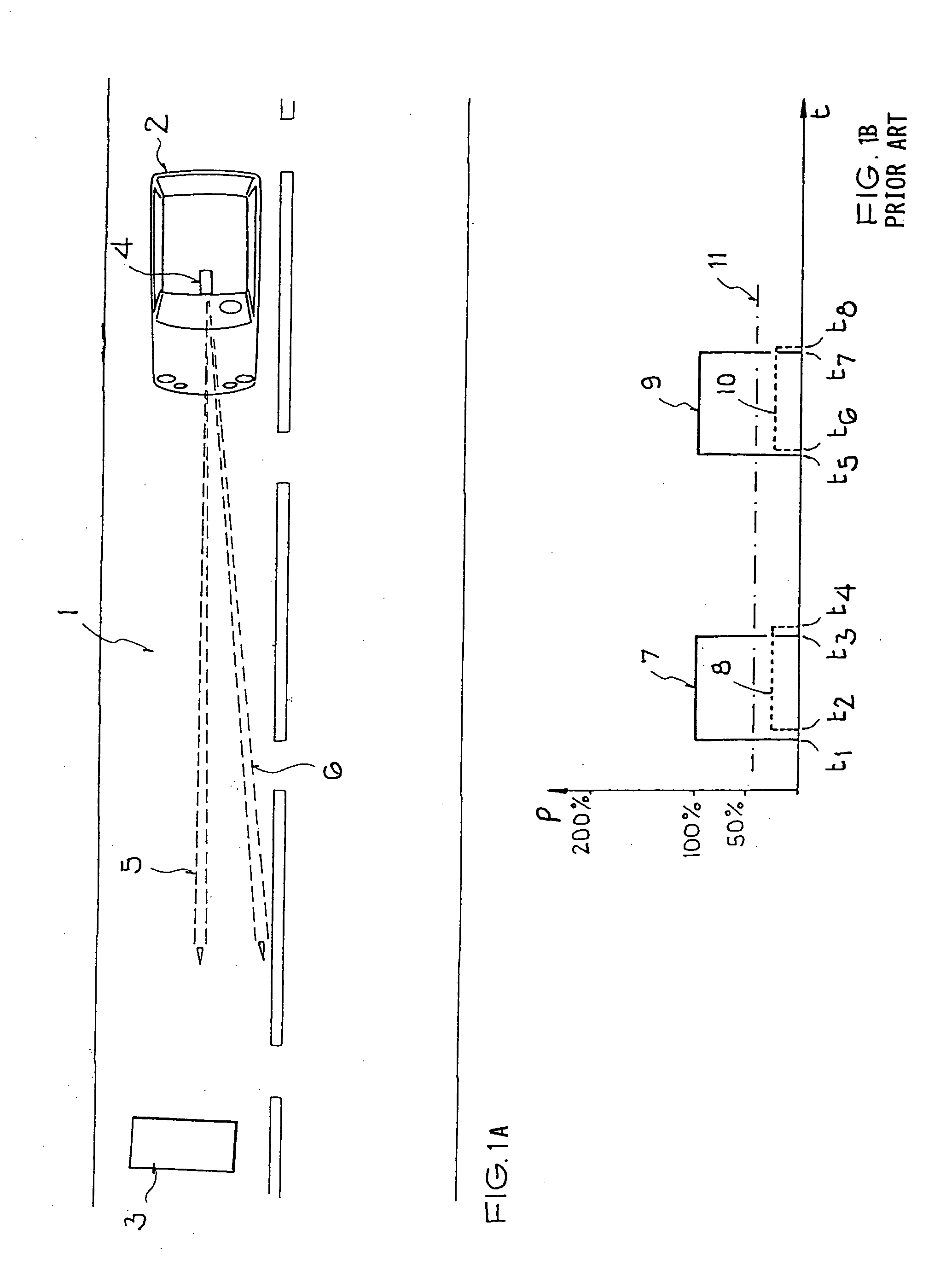Method of operating an active obstacle warning system
a technology of obstacle warning and active detection, which is applied in the direction of braking systems, instruments, and reradiation, etc., can solve the problems of unable to provide distance and relative speed information regarding obstacles, and unable to provide further information
- Summary
- Abstract
- Description
- Claims
- Application Information
AI Technical Summary
Benefits of technology
Problems solved by technology
Method used
Image
Examples
Embodiment Construction
[0026] The top plan view of FIG. 1A schematically shows a motor vehicle 2 driving on a roadway 1 toward a stationary or moving obstacle 3. An obstacle warning system 4 is installed in the vehicle 2, and particularly preferably at an assembly point in the middle of the front of the ceiling or headliner of the vehicle 2. The obstacle warning system 4 emits electromagnetic waves forming at least two directed radiation lobes or beams 5 and 6 generally oriented in the forward driving direction of the vehicle 2. The obstacle warning system 4 may preferably comprise a photo mixing detector or photonic mixer device (PMD) sensor disclosed in the PCT Publication WO 99 / 60629 A1. Alternatively, the obstacle warning system 4 may comprise any other known device, components, or arrangement for detecting obstacles using at least one emitted radiation beam.
[0027] In any event, this system 4 serves to detect the obstacle 3, and measure the distance from the vehicle 2 to the obstacle 3 by evaluating a...
PUM
 Login to View More
Login to View More Abstract
Description
Claims
Application Information
 Login to View More
Login to View More - R&D
- Intellectual Property
- Life Sciences
- Materials
- Tech Scout
- Unparalleled Data Quality
- Higher Quality Content
- 60% Fewer Hallucinations
Browse by: Latest US Patents, China's latest patents, Technical Efficacy Thesaurus, Application Domain, Technology Topic, Popular Technical Reports.
© 2025 PatSnap. All rights reserved.Legal|Privacy policy|Modern Slavery Act Transparency Statement|Sitemap|About US| Contact US: help@patsnap.com



